Trekking the Pikey Peak Trek is a mesmerizing adventure in the heart of the Himalayas, offering breathtaking views and cultural encounters. We want to share the valuable insights and lessons I learned along the way.
In this blog post, we will provide you with essential information and tips for this trek.
About the Pikey Peak Trek
The Pikey Peak trek is a hidden gem nestled in the Solu-Khumbu region of Nepal. While it may not be as well-known as the Everest Base Camp or Annapurna Circuit treks, it offers its own unique charm and stunning vistas. The trek derives its name from Pikey Peak, a majestic summit standing at an elevation of 4,065 meters (13,335 feet). From the summit, you can witness a panoramic view that encompasses some of the world’s highest peaks. This includes Mount Everest, Kanchenjunga, Makalu, and Lhotse.
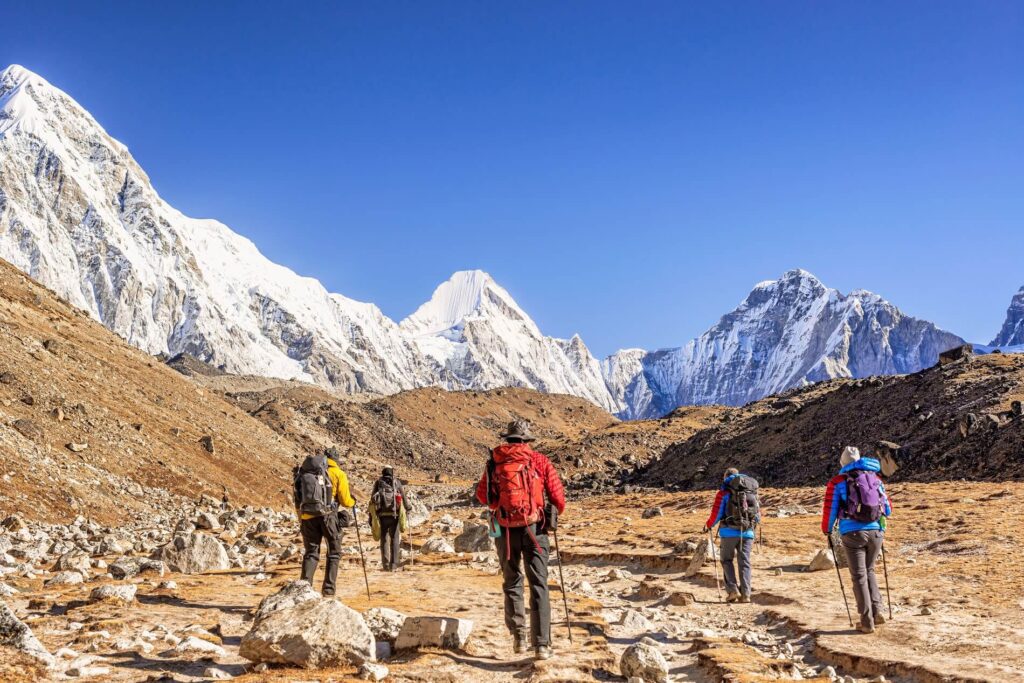
One of the distinct features of the Pikey Peak trek is its cultural richness. The trail takes you through traditional Sherpa villages. Here you can immerse yourself in the local way of life and experience their warm hospitality.

Along the route, you’ll encounter colorful prayer flags, intricately designed monasteries, and stone Chortens that reflect the region’s Buddhist heritage.
Aside from the awe-inspiring mountain vistas and cultural encounters, the Pikey Peak trek also offers a chance to explore the pristine beauty of the Himalayan landscapes. The trail meanders through rhododendron forests, lush meadows, and tranquil alpine pastures, providing a serene environment to connect with nature.
Culture
Another highlight of this trek is the opportunity to witness unique festivals and rituals. If you time your visit during the months of March or April, you might be fortunate enough to witness some amazing festivals. Like the vibrant celebrations of the Sherpa New Year (Gyalpo Losar) or the Dumji festival in Junbesi, where the local communities come together to perform traditional dances and rituals.

The Pikey Peak trek is typically completed in around 8-12 days, depending on the chosen route and pace. The best time to undertake this adventure is during the spring (March to May) and autumn (September to November) seasons when the weather is generally favorable, offering clear skies and pleasant temperatures.
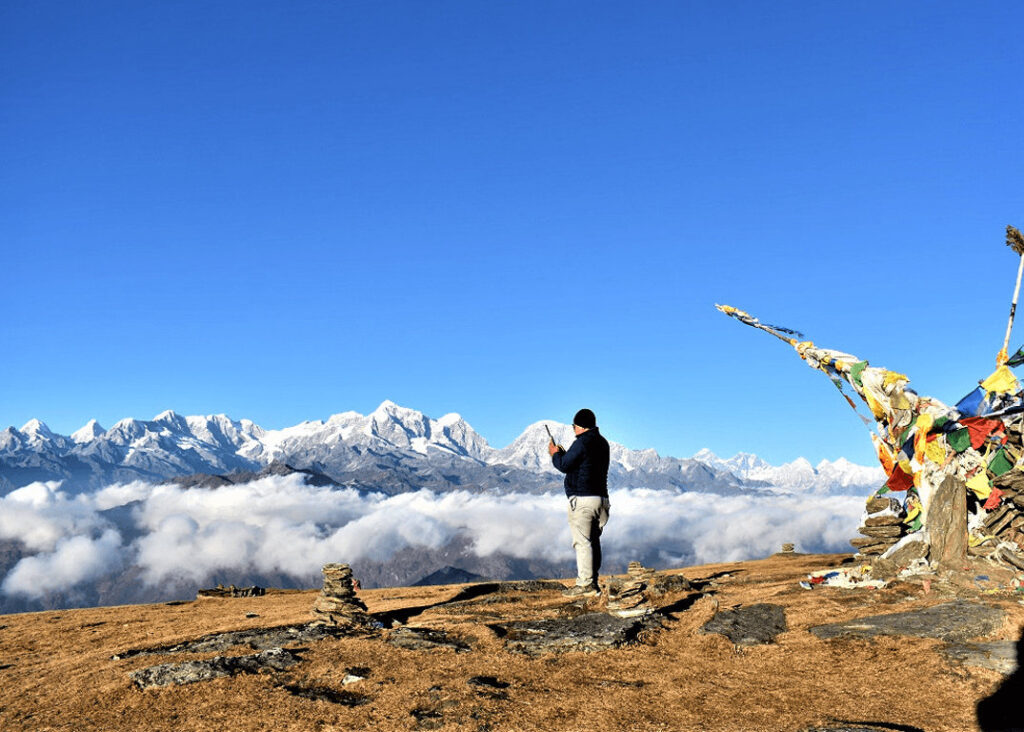
In summary, the Pikey Peak trek is a hidden treasure that combines breathtaking mountain panoramas, cultural immersion, and tranquil natural beauty. It’s a trek that appeals to those seeking a quieter and less crowded experience in the Himalayas, while still offering remarkable views and encounters with the Sherpa culture.
Whether you’re an experienced trekker or a beginner looking for an off-the-beaten-path adventure, the Pikey Peak trek is sure to leave you with unforgettable memories.
Permits and Regulations for Pikey Peak Trek
Before embarking on the Pikey Peak trek, it’s important to ensure you have the necessary permits and adhere to the local regulations. Here are the permits you’ll need:
TIMS (Trekkers’ Information Management System) Card:
The TIMS card is a mandatory permit for all trekkers in Nepal. It helps track trekkers’ information and ensures their safety. To obtain a TIMS card, you can either apply as an individual trekker or as part of a group through a registered trekking agency.
Must Read: Pikey Peak Trek Permits
You’ll need to provide your personal details, and trekking route, and pay the required fee. The TIMS card costs around NPR 2,000 (approximately USD 20) for individual trekkers and NPR 1,000 (approximately USD 10) for group trekkers.
Sagarmatha National Park Permit:
Since the Pikey Peak trek is located within the Sagarmatha National Park, you’ll need a permit to enter the park. The permit is aimed at conserving the fragile ecosystem and maintaining the natural beauty of the area. You can obtain the Sagarmatha National Park permit in Kathmandu or at the park entrance in Monjo. The permit fee for foreigners is USD 30 per person.

It’s important to note that these permit fees are subject to change, so it’s advisable to check with the authorities or your trekking agency for the most up-to-date information.
Obtaining these documents
While obtaining permits, you’ll be required to present your identification documents, such as your passport and a copy of your passport-sized photograph. Ensure that you have these documents readily available and carry multiple copies for any future permits or checkpoints during the trek.
It’s also essential to abide by the local regulations and respect the natural and cultural heritage of the region. Stay on designated trails, avoid littering, and be mindful of the local customs and traditions. Responsible trekking ensures the sustainability of the area and contributes to a positive experience for both trekkers and the local communities.
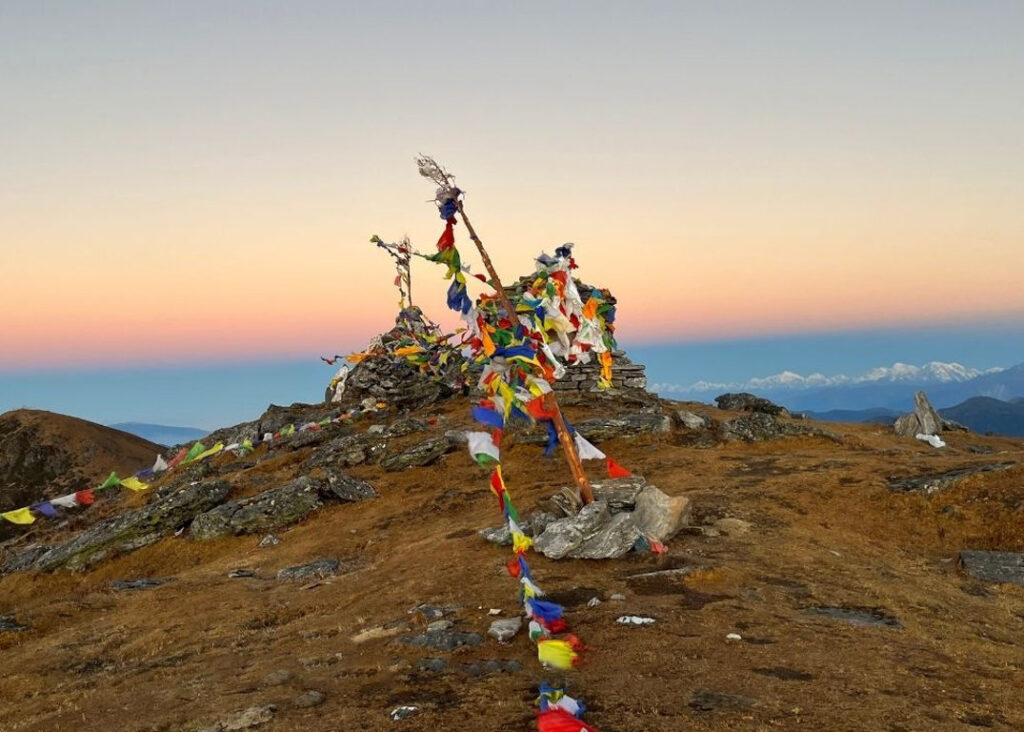
By acquiring the necessary permits and following the regulations, you’ll have a smooth and hassle-free trekking experience in the Pikey Peak region while supporting the conservation efforts of the area.
Remember, permit requirements and fees can change, so it’s always a good idea to consult official sources or your trekking agency to ensure you have the most accurate and up-to-date information before undertaking the Pikey Peak trek.
Pikey Peak Trek Difficulty Level
The Pikey Peak trek is considered moderately challenging, making it suitable for trekkers with a moderate level of fitness and some prior trekking experience. Understanding the difficulty level of the trek is crucial for proper preparation. Here are some factors to consider:
Altitude:
One of the primary challenges of the Pikey Peak trek is the altitude. The trek reaches an elevation of 4,065 meters (13,335 feet) at Pikey Peak. As you ascend to higher altitudes, the air becomes thinner, making it harder for your body to get the oxygen it needs.
Related: Pikey Peak Trek Difficulty
It’s important to acclimatize properly by gradually ascending, taking regular rest days, and staying well-hydrated. Acute Mountain Sickness (AMS) can be a concern, so it’s crucial to be aware of the symptoms and descend if necessary.
Terrain:
The terrain on the Pikey Peak trek varies from well-defined paths to rocky and uneven trails. You’ll encounter ascents and descents, including some steep sections.
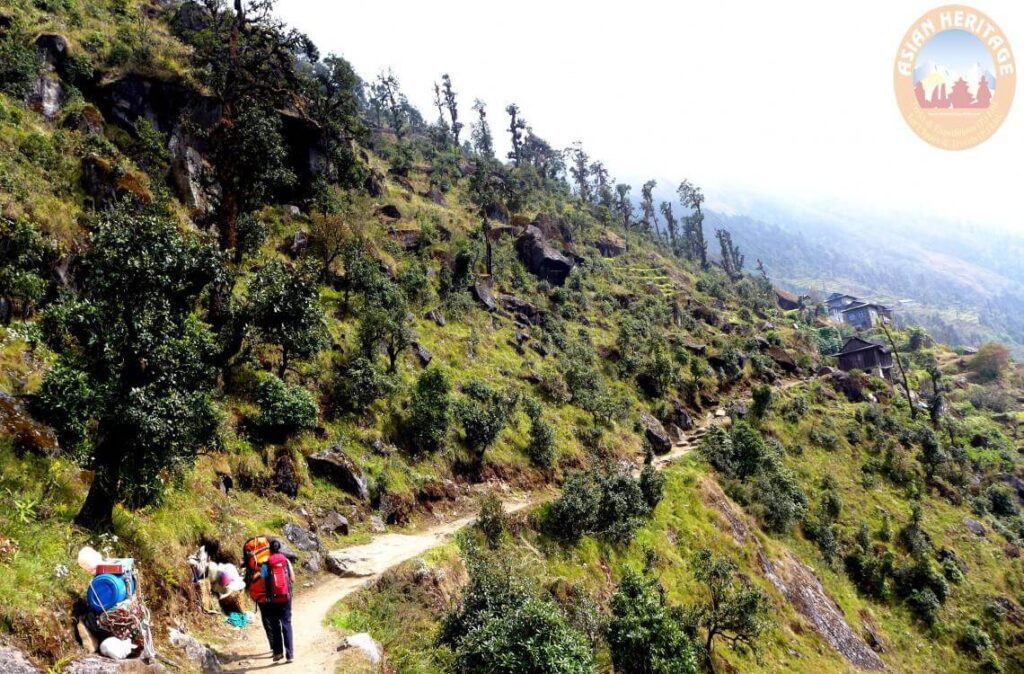
The trails can be muddy and slippery, particularly during the monsoon season. Trekking poles can be helpful for stability and reducing strain on your knees and legs.
Weather Conditions:
The weather in the Himalayas can be unpredictable, even during the peak trekking seasons. While the spring and autumn months generally offer more stable weather, be prepared for occasional rain, fog, or even snowfall, especially at higher altitudes. Pack appropriate clothing layers to accommodate changing weather conditions and ensure your gear is suitable for cold temperatures.
Duration and Daily Walking Distance:
The Pikey Peak trek typically takes around 8-12 days to complete, depending on the chosen itinerary and your pace. You’ll be walking for several hours each day, with average daily distances ranging from 5 to 15 kilometers (3 to 9 miles). It’s essential to be physically prepared for sustained walking and build your endurance through regular exercises, such as hiking, jogging, or stair climbing.
Remote Areas and Limited Facilities:
Certain sections of the Pikey Peak trek pass through remote areas with limited facilities. Accommodations may be basic teahouses with shared facilities, and food options can be limited to locally available meals. Be prepared for the absence of amenities like hot showers and Wi-Fi in some places. It’s advisable to carry essentials like a sleeping bag, trekking poles, and water purification tablets.

Proper physical preparation, including cardiovascular and leg-strengthening exercises, can enhance your trekking experience. It’s also helpful to consult with a medical professional before undertaking the trek, particularly if you have any pre-existing health conditions.
While the Pikey Peak trek presents certain challenges, it’s important to approach it with a positive mindset and take your time to enjoy the journey. With proper preparation, acclimatization, and a cautious approach, you can conquer the Pikey Peak trek and revel in its breathtaking vistas and cultural encounters.
Pikey Peak Trek Cost and Budgeting
Budgeting is an important aspect of planning your Pikey Peak trek. Consider the following factors when estimating your costs:
Permits and Fees:
Account for the cost of necessary permits, such as the TIMS card and Sagarmatha National Park permit. As mentioned earlier, the TIMS card costs around NPR 2,000 (approximately USD 20) for individual trekkers and NPR 1,000 (approximately USD 10) for group trekkers.
The Sagarmatha National Park permit fee for foreigners is USD 30 per person.
Transportation:
Include the cost of transportation from Kathmandu to the starting point of the trek, such as Jiri or Phaplu.

You can opt for a bus or private vehicle. Consider the time and distance involved and factor in additional costs if you choose a private vehicle.
Accommodations:
Accommodation options along the Pikey Peak trek primarily consist of teahouses or guesthouses. These provide basic facilities such as a bed, blanket, and shared toilets. The cost of accommodation varies depending on the location and season. On average, expect to spend around USD 10-20 per night for a basic teahouse room.
Meals and Drinks:
Most teahouses along the trek offer meals like dal bhat (rice and lentil soup), noodles, momos, and other local dishes.

The cost of meals can range from USD 5 to 15 per meal, depending on the location and type of food. It’s advisable to carry some extra cash for snacks, bottled water, or hot beverages like tea or coffee.
Guide and Porter:
While hiring a guide or porter is optional, it can enhance your trekking experience and ease the burden of carrying a heavy backpack. The cost of hiring a guide can range from USD 25 to 35 per day, while a porter may cost around USD 15 to 25 per day. Negotiate the fees and services offered before finalizing the arrangement.
Miscellaneous Expenses:
Include additional costs for items such as trekking gear, travel insurance, medical supplies, and tips for guides and porters. It’s advisable to have travel insurance that covers emergency medical expenses, evacuation, and trip cancellation.

Keep in mind that the above costs are approximate and can vary based on your preferences, negotiation skills, and the exchange rate at the time of your trek. It’s wise to carry some extra cash for unforeseen circumstances or unexpected expenses.
To manage your budget effectively, consider the following tips:
- Opt for local meals and avoid imported or luxury items that may be more expensive.
- Carry reusable water bottles and use water purification tablets or filters to save money on bottled water.
- Share accommodations with fellow trekkers to split the cost.
- Be mindful of unnecessary expenses and prioritize essential items and experiences.
By planning your budget in advance and keeping a reasonable estimate of costs, you can enjoy your Pikey Peak trek without financial stress and make the most of your experience in the Himalayas.
Some FAQs of Pikey Peak Trek
What are the accommodation options along the trek?
Along the Pikey Peak trek, the primary accommodation options are teahouses or guesthouses. These are basic lodges that offer a bed, blanket, and shared toilet facilities. Teahouses are typically located in villages and along the trekking route, providing trekkers with a convenient place to rest and rejuvenate.
You may also like: Pikey Peak Trek in December: Weather, Difficulty, Travel Tips, and More
While the facilities may be basic, they offer a cozy and communal atmosphere, allowing you to connect with fellow trekkers and experience the local hospitality.
Is vegetarian food readily available?
Yes, vegetarian food is readily available along the Pikey Peak trek. Most teahouses and guesthouses offer a variety of vegetarian options on their menus.
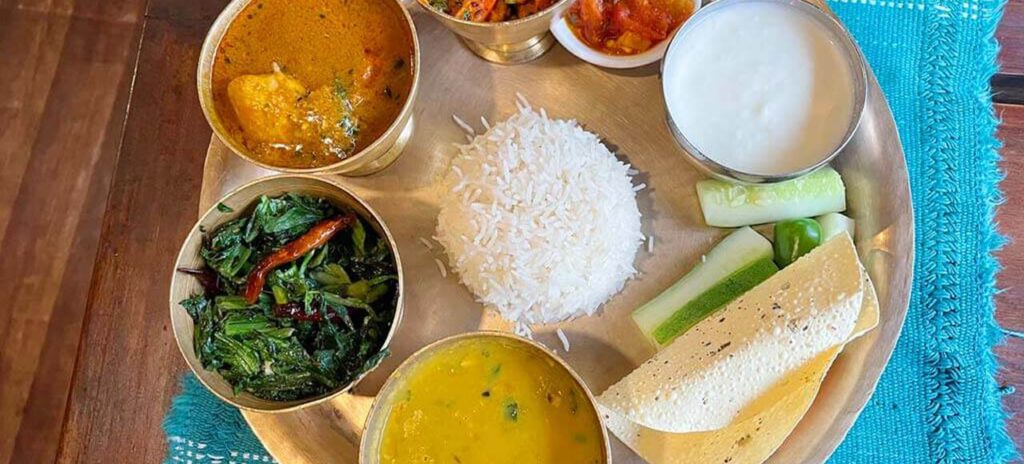
You can enjoy local Nepali dishes like dal bhat (rice and lentil soup), vegetable curries, noodles, momos (dumplings), and more. It’s advisable to inform the teahouse in advance about your dietary preferences to ensure they can accommodate your needs.
How can I communicate with the locals and fellow trekkers?
While language barriers may exist, there are several ways to communicate with the locals and fellow trekkers:
- Basic English: Many people in the trekking areas have a basic understanding of English, especially those involved in the tourism industry. You can use simple English words and phrases to communicate and interact with the locals.
- Local Phrases: Learning a few basic Nepali phrases can go a long way in fostering connections. Greetings, thank you, and basic conversation starters can help break the ice and show respect for the local culture.
- Body Language: Non-verbal communication, such as gestures, facial expressions, and body language, can convey messages effectively. Be open, friendly, and approachable to encourage interactions.
- Guide or Porter: If you have hired a guide or porter, they can help bridge the communication gap and facilitate interactions with locals.
What safety precautions should I take?
Safety should be a top priority during the Pikey Peak trek. Here are some essential safety precautions to consider:
Acclimatization:
Take time to acclimatize to the increasing altitude. Ascend gradually, stay hydrated, and be aware of symptoms of Acute Mountain Sickness (AMS). If you experience severe symptoms, descend to a lower altitude and seek medical attention.
Weather Conditions:
Be prepared for changing weather conditions and pack appropriate clothing layers. Check weather forecasts before your trek and adjust your plans if necessary.

Hydration and Water:
Stay hydrated by drinking plenty of fluids. Carry a reusable water bottle and use water purification tablets or filters to ensure the water you consume is safe.
Trekking Permits and Documentation:
Obtain the necessary permits and carry identification documents at all times. Follow local regulations and respect the environment.
Physical Fitness and Training:
Maintain a reasonable level of physical fitness before the trek. Engage in regular exercise and prepare your body for the demands of trekking.
Trekking Equipment:
Use proper trekking gear, including sturdy footwear, appropriate clothing, a backpack, and trekking poles. Ensure your gear is in good condition before the trek.
Popular: Pikey Peak Trek in November: Weather, Difficulty, Travel Tips, and More
Local Advice:
Seek advice from local guides or experienced trekkers regarding trail conditions, safety precautions, and any potential risks.
Travel Insurance:
Obtain travel insurance that covers trekking activities, emergency medical expenses, evacuation, and trip cancellation.
Trekking Route
The Pikey Peak trek offers a scenic and diverse route, allowing you to immerse yourself in the natural beauty and cultural heritage of the region. Here is a general overview of the trekking route:
The trek can be started from different points, with Jiri and Phaplu being the most common starting points. The route can be customized based on your preferences and time availability. The following is a popular itinerary:
- Throughout the trek, you’ll pass through charming villages, terraced fields, dense forests, and high ridges, offering breathtaking views of the Himalayan peaks. You’ll have opportunities to interact with the local Sherpa and Rai communities, experience their unique culture, visit monasteries, and witness their traditional way of life.
- The Pikey Peak trek provides a balanced mix of natural beauty, cultural exploration, and panoramic mountain vistas. It’s an off-the-beaten-path trek that offers a quieter and less crowded experience compared to popular routes like Everest Base Camp or Annapurna Circuit.
As always, it’s recommended to trek with a knowledgeable guide or join a guided group to ensure safety, navigation, and cultural insights along the way.
Related Treks and Side Trips
While the Pikey Peak trek itself is a rewarding and fulfilling adventure, there are several other treks and side trips in the surrounding region that you can consider combining with your Pikey Peak trek. These additional treks offer unique experiences and allow you to explore more of the Himalayan beauty. Here are a few notable options:
Everest Base Camp Trek:
If you have more time and a higher level of fitness, you can extend your adventure by combining the Pikey Peak trek with the famous Everest Base Camp trek.

The Everest Base Camp trek takes you to the base of the world’s highest mountain, Mt. Everest (8,848m/29,029ft), and offers breathtaking views of other majestic peaks in the Everest region. This trek requires more time, typically around 12-14 days, and involves higher altitudes and more challenging terrain.
Gokyo Lakes Trek:
The Gokyo Lakes trek is another popular option to combine with the Pikey Peak trek. This trek takes you to the beautiful Gokyo Valley, where you’ll encounter a series of turquoise glacial lakes nestled amidst towering peaks.

The trek offers stunning views of Mt. Cho Oyu (8,201m/26,906ft) and Everest, as well as the opportunity to climb Gokyo Ri (5,357m/17,575ft) for a panoramic perspective. The Gokyo Lakes trek typically takes around 10-12 days to complete.
Rolwaling Valley Trek:
The Rolwaling Valley trek is a remote and less-trodden route that takes you through the picturesque Rolwaling Valley, situated between the Everest and Langtang regions. This trek offers a unique blend of natural beauty, including glaciers, waterfalls, and diverse flora and fauna.
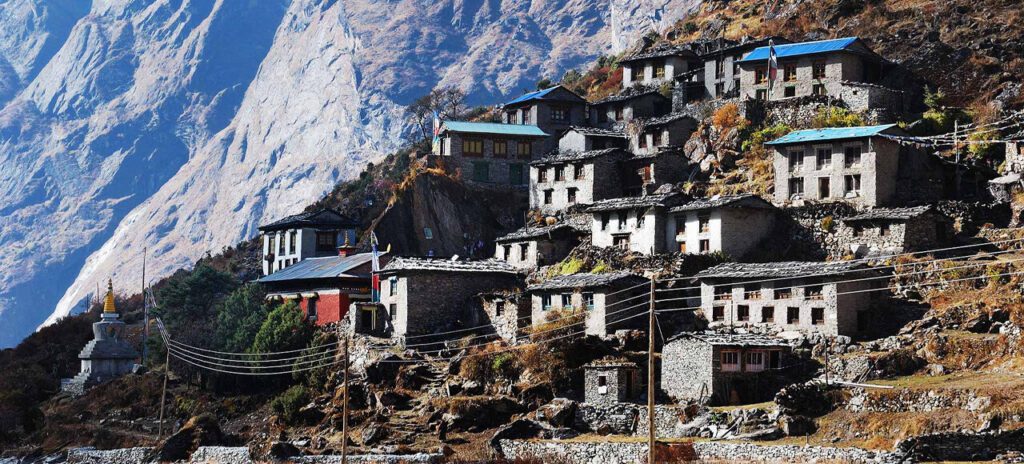
The challenging trek leads you to Tsho Rolpa, a stunning glacial lake, and offers a chance to glimpse the towering peaks of the Rolwaling and Khumbu regions. The Rolwaling Valley trek usually takes around 12-14 days to complete.
Lower Solu Trek:
For a shorter and less strenuous option, you can consider the Lower Solu trek. This trek explores the lower Solu region, passing through scenic villages, terraced fields, and lush forests. You’ll have the opportunity to immerse yourself in the local culture, visit monasteries, and witness the traditional way of life of the Rai and Sherpa communities. The Lower Solu trek typically takes around 5-7 days to complete.

When combining treks or side trips, it’s important to plan your itinerary carefully, considering factors such as time, fitness level, acclimatization, and logistics. Hiring a knowledgeable guide or joining a guided group can provide assistance in organizing and navigating multiple treks, ensuring a seamless and enriching experience.
Whether you choose to combine the Pikey Peak trek with another adventure or explore the trek on its own, the Himalayan region offers a multitude of trekking opportunities that cater to various preferences and fitness levels. Each trek presents its own unique landscapes, cultural encounters, and rewarding experiences that will leave you with cherished memories of your time in the mountains.
Conclusion
In conclusion, the Pikey Peak trek offers an incredible adventure through the beautiful landscapes and cultural riches of the Solu region in Nepal. With its stunning views of the Himalayas, including the iconic Mt. Everest, and encounters with the warm-hearted Sherpa and Rai communities, this trek provides a unique and off-the-beaten-path experience.

Throughout the trek, you’ll witness picturesque villages, terraced fields, rhododendron forests, and serene valleys. The route offers a balanced mix of challenging ascents, rewarding summit climbs, and peaceful descents, allowing you to immerse yourself in the natural wonders of the Himalayas.

From obtaining permits and budgeting for the trek to understanding the difficulty level and necessary safety precautions, being well-prepared and informed is essential. The accommodation options are basic teahouses, and vegetarian food is readily available along the route.
Additionally, combining the Pikey Peak trek with other treks or side trips, such as the Everest Base Camp trek or the Gokyo Lakes trek, can further enhance your adventure and provide a more comprehensive exploration of the region.
Whether you’re seeking panoramic mountain vistas, cultural immersion, or a personal challenge, the Pikey Peak trek is a fantastic choice. With proper planning, a spirit of adventure, and an open mind, you’ll create unforgettable memories and embark on a journey of self-discovery in the breathtaking Himalayan landscapes of Nepal.







